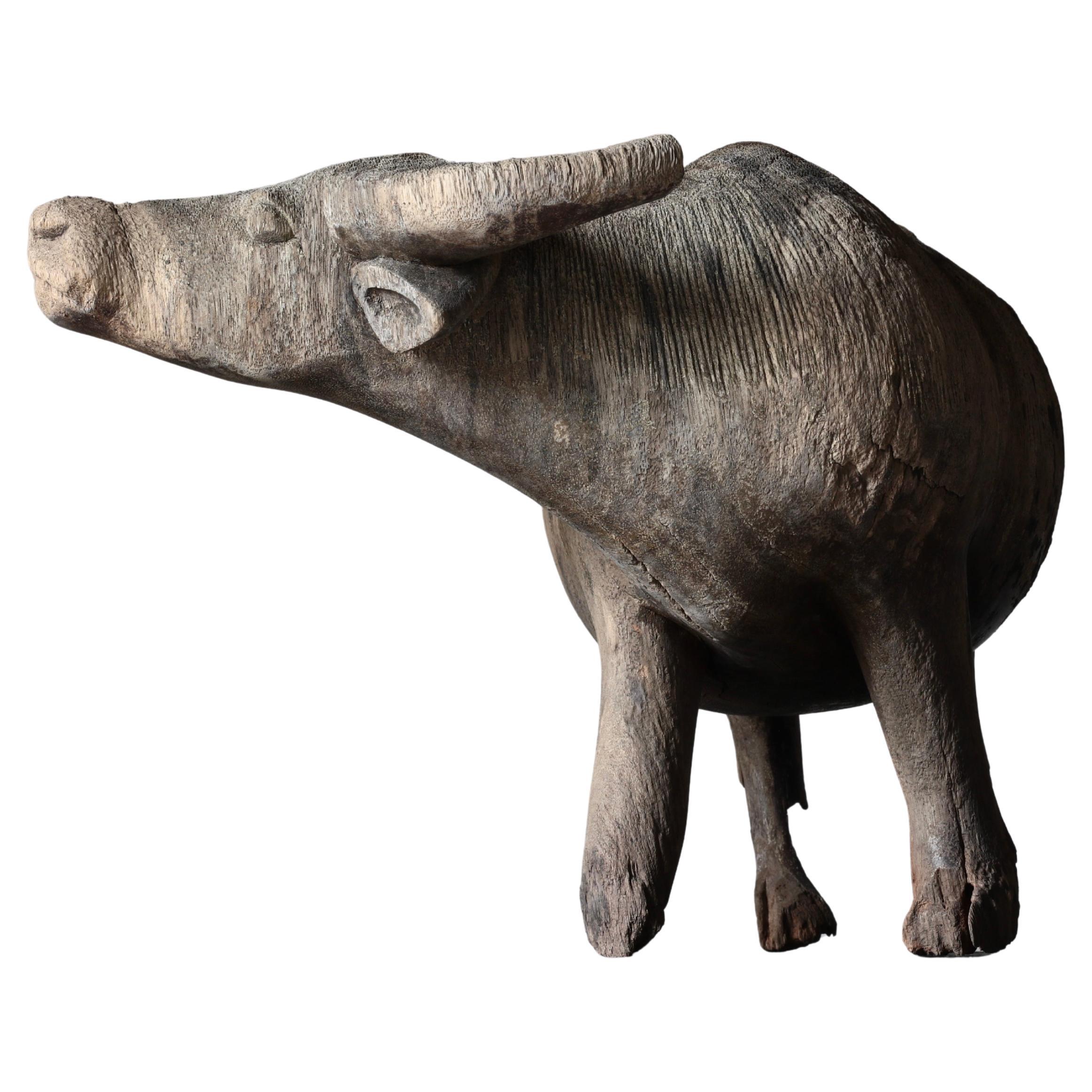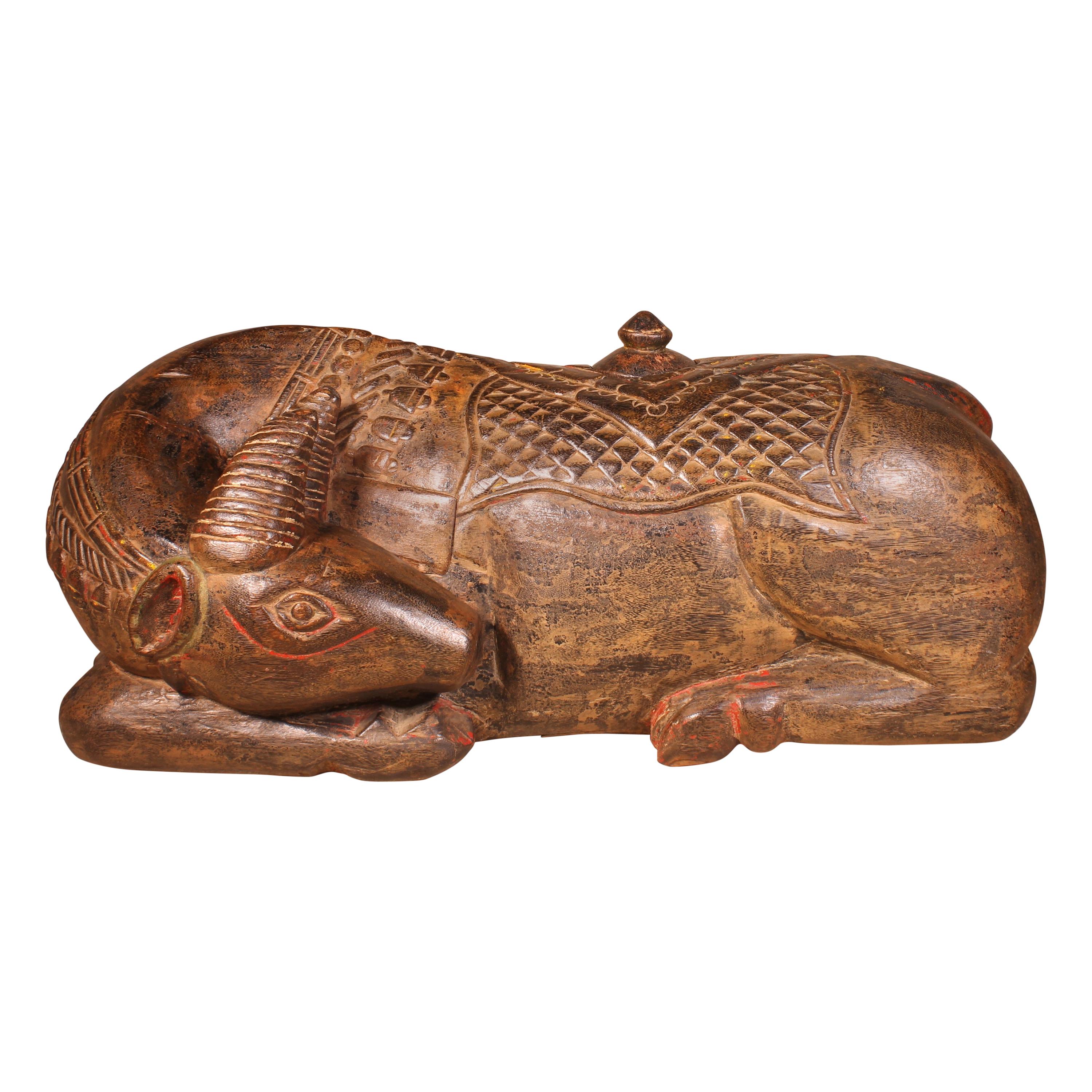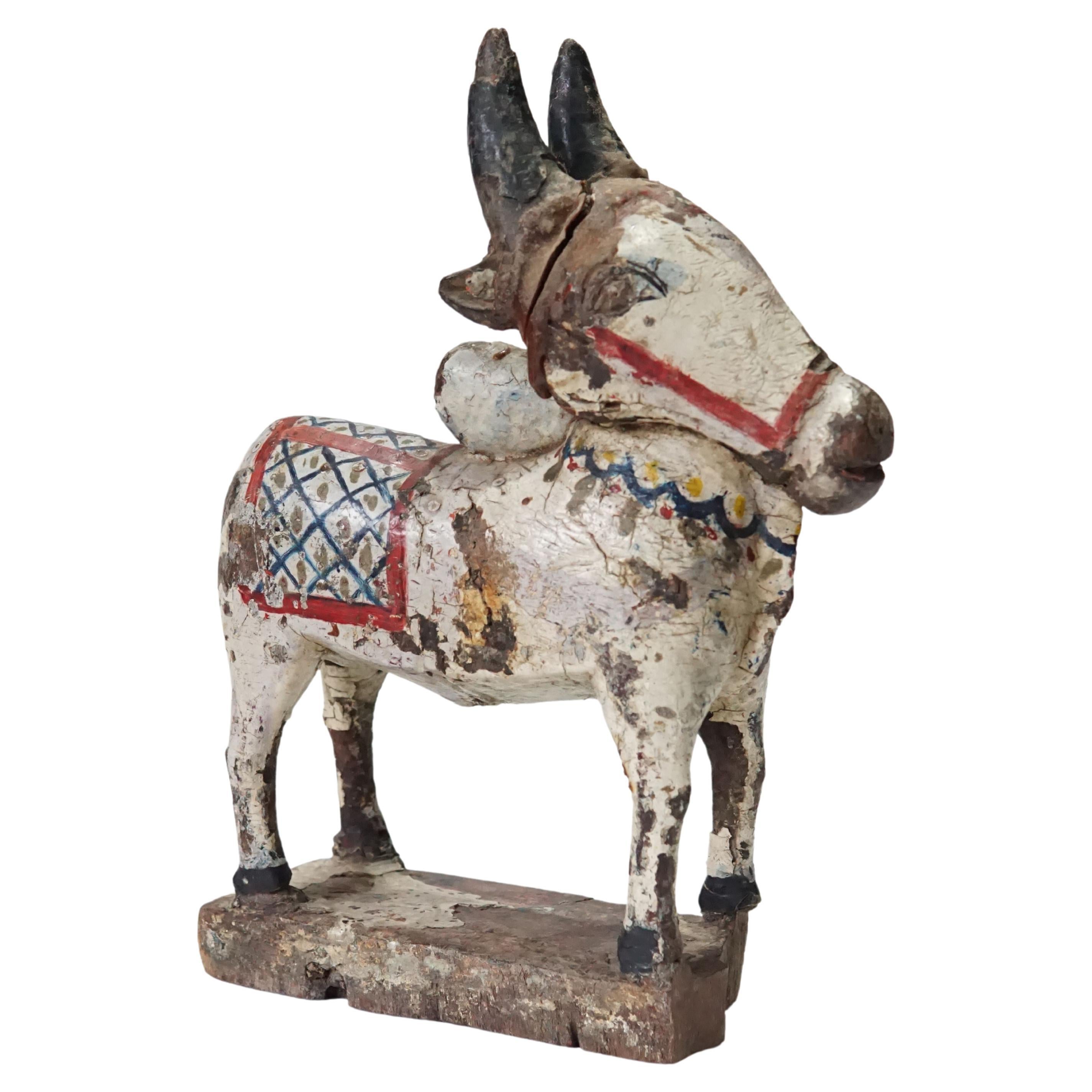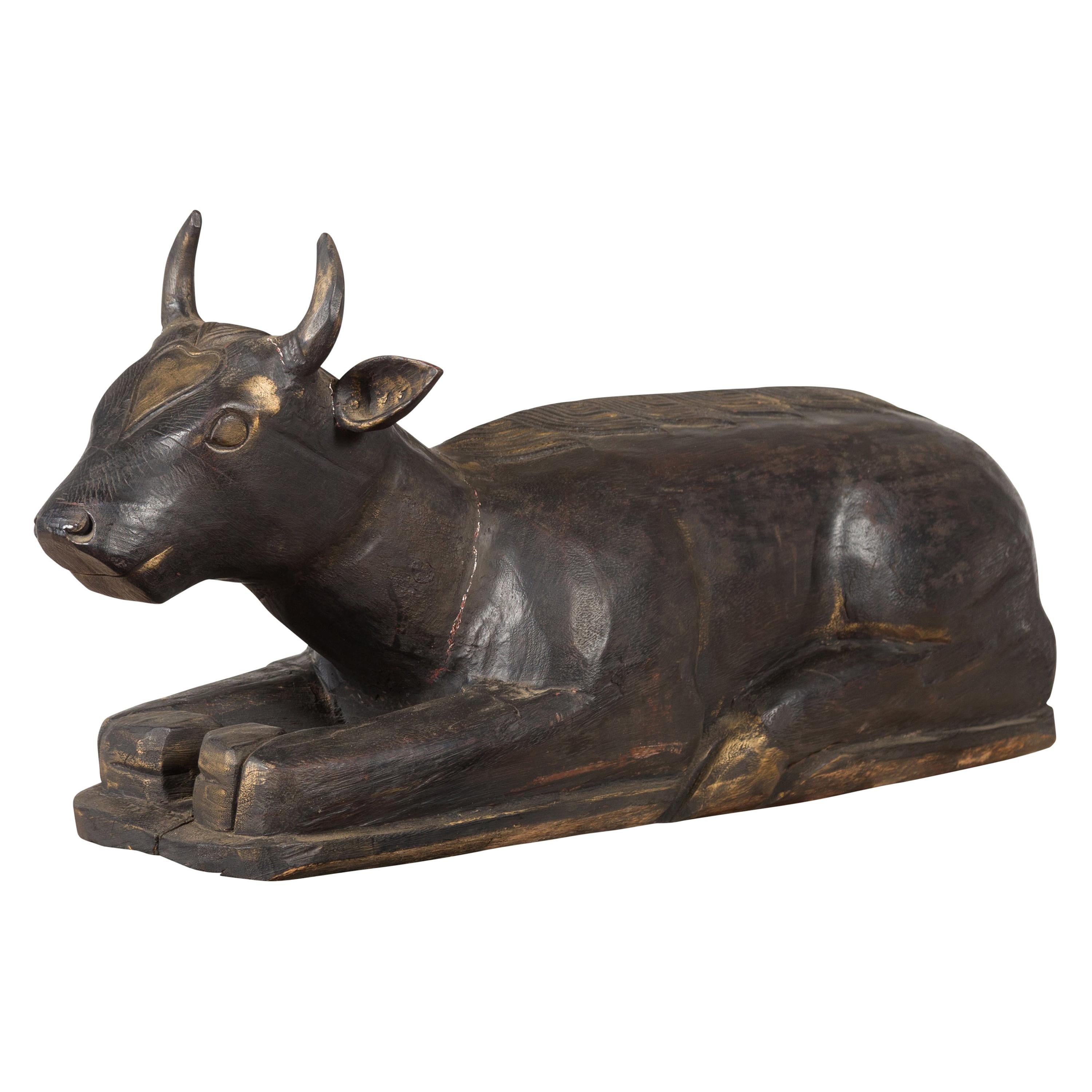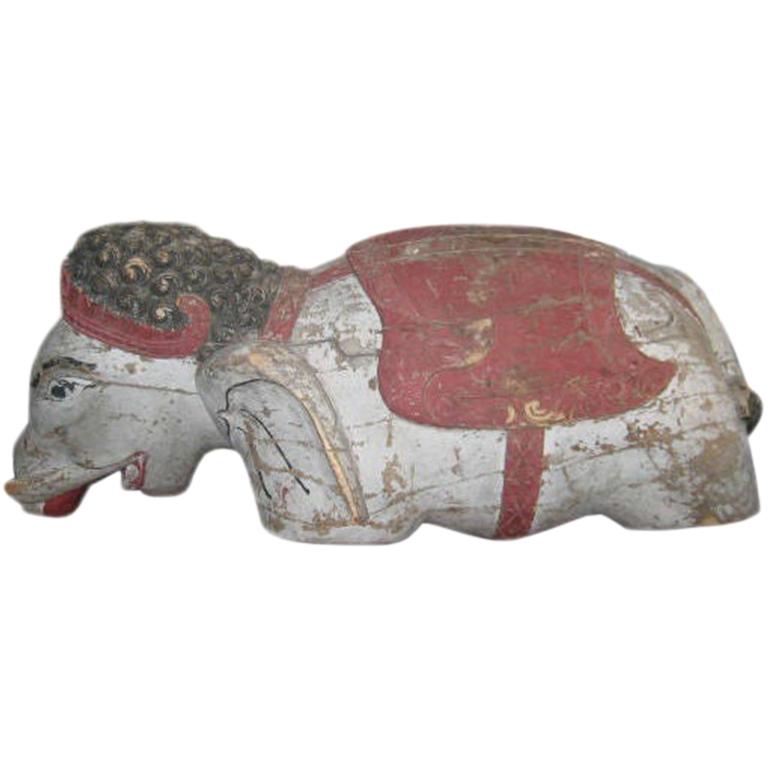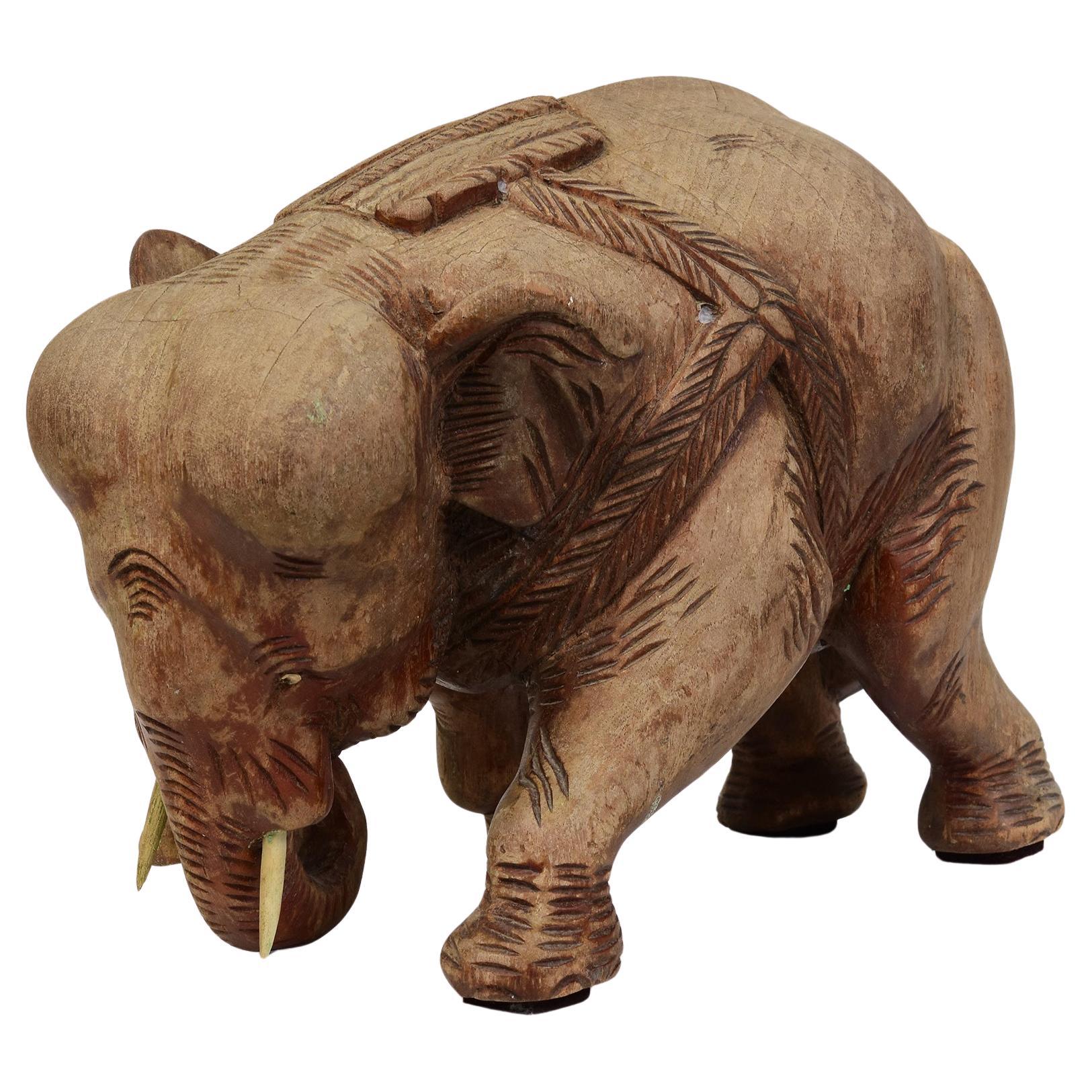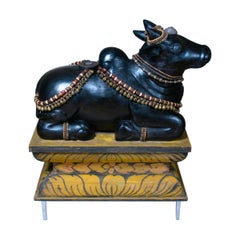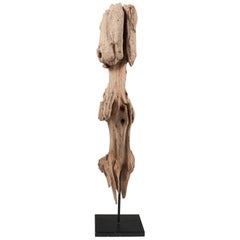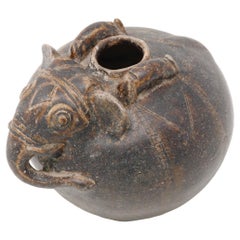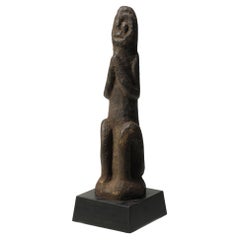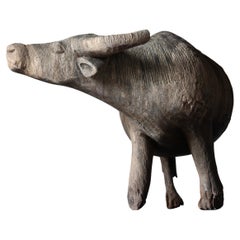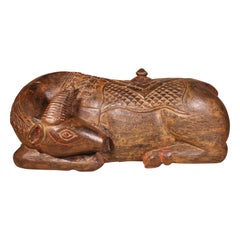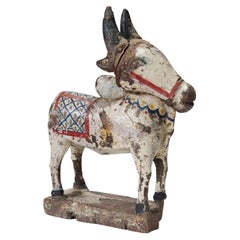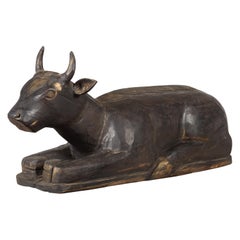Items Similar to 19th Century Large Buffalo Statue from Burma
Want more images or videos?
Request additional images or videos from the seller
1 of 7
19th Century Large Buffalo Statue from Burma
$960
$3,00068% Off
£727.81
£2,274.4168% Off
€838.97
€2,621.8068% Off
CA$1,352.01
CA$4,225.0268% Off
A$1,499.27
A$4,685.2368% Off
CHF 787.76
CHF 2,461.7468% Off
MX$18,318.59
MX$57,245.5968% Off
NOK 9,855.92
NOK 30,799.7668% Off
SEK 9,251.47
SEK 28,910.8368% Off
DKK 6,263.11
DKK 19,572.2268% Off
About the Item
19th century exceptionally large buffalo mold from Burma
Materials: wood, metal
Measures: H 23 in x L 18.5 in, 58.4 cm x 47 cm.
Wooden buffalo mold for making papier mâché toy figures.
- Dimensions:Height: 23 in (58.42 cm)Width: 18.5 in (46.99 cm)Depth: 6 in (15.24 cm)
- Style:Tribal (Of the Period)
- Materials and Techniques:
- Place of Origin:
- Period:
- Date of Manufacture:19th Century
- Condition:Minor structural damages.
- Seller Location:Point Richmond, CA
- Reference Number:Seller: VS300-1912161stDibs: LU177824928733
About the Seller
5.0
Platinum Seller
Premium sellers with a 4.7+ rating and 24-hour response times
Established in 1999
1stDibs seller since 2015
698 sales on 1stDibs
Typical response time: 2 hours
- ShippingRetrieving quote...Shipping from: Mill Valley, CA
- Return Policy
Authenticity Guarantee
In the unlikely event there’s an issue with an item’s authenticity, contact us within 1 year for a full refund. DetailsMoney-Back Guarantee
If your item is not as described, is damaged in transit, or does not arrive, contact us within 7 days for a full refund. Details24-Hour Cancellation
You have a 24-hour grace period in which to reconsider your purchase, with no questions asked.Vetted Professional Sellers
Our world-class sellers must adhere to strict standards for service and quality, maintaining the integrity of our listings.Price-Match Guarantee
If you find that a seller listed the same item for a lower price elsewhere, we’ll match it.Trusted Global Delivery
Our best-in-class carrier network provides specialized shipping options worldwide, including custom delivery.More From This Seller
View AllCarved Wood Sculpture of the Hindu Deity Nandi With Pedestal, Circa 1920
Located in Point Richmond, CA
South Indian carved wood sculpture depicting the Hindu Deity of Nandi, a recumbent black bull figure, known within the Hindu faith as the vehicle for Siva, often depicted in sculptur...
Category
20th Century Indian Folk Art Sculptures and Carvings
Materials
Hardwood
Late 19th-Early 20th Century Tribal Guardian Figure, Northwest Nepal
Located in Point Richmond, CA
Late 19th-early 20th century tribal guardian figure, Northwest Nepal
The mere essence of a protector figure remains in this weathered fragmen...
Category
Antique Late 19th Century Nepalese Tribal Sculptures and Carvings
Materials
Wood
Khmer Elephant Form Lime Pot, 12th century.
Located in Point Richmond, CA
Khmer Elephant Form Lime Pot, 12th century. A globular stoneware form with narrow aperture on top for the slaked lime. The pot modeled after an elephant...
Category
Antique 15th Century and Earlier Cambodian Other Ceramics
Materials
Ceramic
Old Tribal Stone Squatting Spring Figure Nepal Early 20th Century Namaste
Located in Point Richmond, CA
Old Tribal stone squatting spring figure with hands raised in namaste position, traces of clay and incrustation, expressive carved face. These were protective figures used in Nepal. ...
Category
Early 20th Century Nepalese Tribal Tribal Art
Materials
Stone
$825 Sale Price
44% Off
Antique Shan (Tai Yai) Jambupati Buddha Image
Located in Point Richmond, CA
Antique Shan (Tai Yai) Jambupati Buddha Image, wood, lacquer and gold leaf, Konbaung Empire (1752-1885)
A crowned style that displays Northern Thai iconography merged with the aesthetic of Burmese rule in the region. The figure is depicted in the popular Theravada seated position of padmasana, (interlocking legs position) and the hand mudra in bhumisparsa (earth touching) wherein the feet are souls up, the fingers of the right hand extend beyond the right shin and the left hand palm up resting above the lap. Remnants of the leaf-like kirita crown remain. The image is dressed in Burmese royal costume with thayo rolled lacquer relief decoration modeled into cuffs, epaulettes, knee pads and a detailed “U” shaped necklace covering the chest. There is also a lappet of clothing between the legs draping down toward the base. The figure is seated upon a tall and waisted throne pedestal having rows of lotus petal grooves on the diagonal portions . The base and body are carved from one solid piece of hard wood. All covered in black lacquer with thayo lacquer details, red pigment for the lips and gold leaf overall.
The Jambupati style Buddha illustrates the tale of the Buddha’s life when he came across the arrogant King Jambupati, a king who terrorized his subjects and who lacked humility and compassion for his people. The Buddha on meeting the King asked that he forsake his evil ways and instead practice kindness to his fellow man. Ignoring the Buddha’s request, the King continued to terrorize the people. The Buddha then in his efforts to change the King of his evil ways, one day magically appeared to him in resplendent royal attire. King Jambupati was in awe of the Buddha’s appearance prostrated himself in obeisance and from that day onward accepted the Buddhist precepts. In Southeast Asian countries like Burma, where rulers have very high if not semi-divine status, tales of this type, reinforced the need for the leader to worship the Buddha, the King of Kings.
Condition: Heavy deterioration of the underside of the base as well as the interior portion of the crown, other losses include crown flanges, the crown spire, earrings, the tip of the left thumb, one base corner edge, rolled lacquer losses and general wear of the gold leaf surface, all commensurate with age and wear.
Measuring: 22.25 in. high x 8.75 in. wide x 7.75 in. deep(56.5cm x 22.2cm x 29.7cm).
Weight: 10.8 lbs.
Age: Late 18th century.
Provenance: Lark...
Category
Antique Late 18th Century Burmese Other Sculptures and Carvings
Materials
Gold Leaf
Antique Thai Architectural Ornament, Sukhothai kilns, 15th century.
Located in Point Richmond, CA
Antique Thai Architectural Ornament, Sukhothai kilns, 15th century. A glazed hollow ceramic roof tile finial of the Naga/Makara Dragon torso design supported by front talons and his ...
Category
Antique 15th Century and Earlier Thai Other Ceramics
Materials
Ceramic
You May Also Like
Japanese Antique Wood-Carved Water Buffalo/ Wooden Figurine/ Wabi-Sabi Primitive
Located in Iwate-gun Shizukuishi-cho, Iwate Prefecture
This is a wooden carved buffalo that has weathered naturally over the years.
It was used in a private home in the Tohoku region and is thought to have undergone gradual changes due ...
Category
Early 20th Century Japanese Primitive Sculptures and Carvings
Materials
Wood, Hardwood
Indian Buffalo in Wood of the 19th Century
Located in Brussels, Brussels
Superb 19th century Indian buffalo in wood
Very beautiful Indian work representing an elongated buffalo which has a superb patina and some rest of his original polychromy
The buffa...
Category
Antique 19th Century Indian International Style Sculptures and Carvings
Materials
Wood
Wooden, Hand-Carved & Painted Nandi Cow, India C. 1900
Located in Jimbaran, Bali
A visibly old hand-carved Nandi Cow from India. This wood sculpture features a wonderful age related patina and has been hand-painted with a mix of white and...
Category
Early 20th Century Indian Other Sculptures and Carvings
Materials
Wood, Paint
Indian Vintage Carved Wooden Bull Sculpture Depicting Guardian Deity Nandi
Located in Yonkers, NY
An Indian vintage Nandi bull sculpture from the mid 20th century, with carved motifs and dark patina. Created in India during the mid 20th century, this car...
Category
Mid-20th Century Indian Animal Sculptures
Materials
Wood
Hand Carved Goan Indian Elephant
Located in Dallas, TX
Hand painted and carved wooden Indian elephant from Goa.
Intricate detailing.
Category
Antique 19th Century Indian Folk Art Animal Sculptures
Materials
Wood
Early 20th Century, Finely Carved Asian Wooden Walking Elephant Animal Statue
Located in Sampantawong, TH
Finely carved Asian wooden walking elephant animal statue.
Age: Early 20th Century
Size: Height 24.7 C.M. / Width 16.5 C.M. / Length 33 C.M.
Condition: Nice condition overall (some ...
Category
Early 20th Century Asian Animal Sculptures
Materials
Wood
More Ways To Browse
Antique Metal Statues
Large Wood Statue
Wooden Tribal Sculpture
Metal Asian Statue
Toy Mold
Papier Mache Toy
Wooden Tribal Statue
Buffalo Statue
Asian Carved Wood Wall Art
Cast Iron Japanese
Japanes Cast Iron
Japanese Wood Masks
Large Jade Carving
Wood Mask Japan
Crown Buddha
Crowned Buddha
Antique Japanese Lantern
Antique Japanese Lanterns
